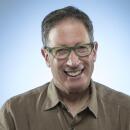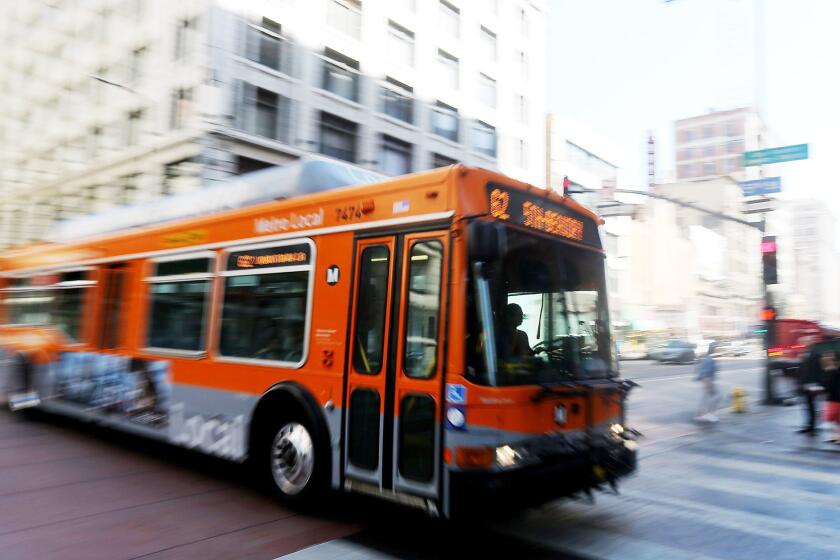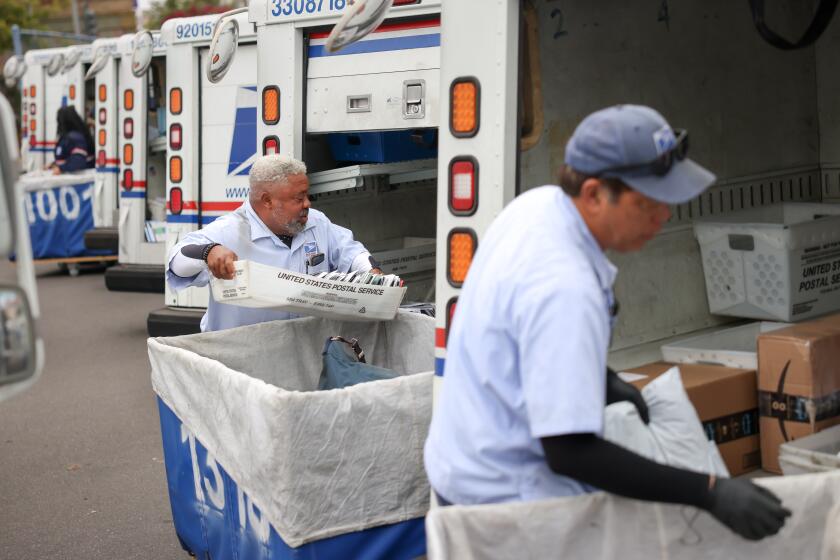In L.A., Movement Lacks Critical Element--Bike Commuters
- Share via
When thousands of defiant cyclists descended on downtown San Francisco in July, tying up rush-hour traffic and getting into fights with angry motorists, it was probably the first time that most Los Angeles drivers had ever heard of the Critical Mass movement.
But a handful of little-publicized rides have been held in the Los Angeles area, though the mass they attracted fell far short of the critical.
“We had one last month that started in Westwood,” said bicycle commuter Julio Uchimura. “It went down Wilshire and then to the Santa Monica Pier.
“There were four of us.”
These group rides--sometimes designed in other cities to slow motor traffic to protest what many bicyclists consider disregard for their rights--are old news in much of the world. The now famous San Francisco ride July 25, when police made more than 250 arrests, was by far the most raucous Critical Mass event to date by the cyclists whose motto is: “We’re not blocking traffic, we ARE traffic!”
There have been other rides in more than 50 cities, including Washington; Seattle; Boston; Atlanta; London; Barcelona, Spain; and Sydney, Australia.
But the revolt of the spokes persons has not caught fire here, although it’s not as if there were a lack of bicyclists in L.A.
“You see them all over on weekends,” said local writer Dylan Macdonald, who distributes the British magazine Bike Culture in the United States. “There is a recreation culture of bicycles here that you don’t find in some other places.
“But there is very little use of bicycles just for transportation. It is not a city of bicycle commuters.”
Commuters and people who make their living on bicycles--such as the couriers who are so prevalent in some cities that they set fashion trends--have been at the heart of many Critical Mass events. They’re the ones most likely to be mixing it up with motor traffic on an almost daily basis.
But there is another problem with holding an effective Critical Mass demonstration in L.A.
“This is a city of urban sprawl,” said city bicycle coordinator Michelle Mowrey. “How do you block the commute if the commute is everywhere?”
The history of Critical Mass has not been carefully documented, which is no surprise because the movement is, by design, unorganized and leaderless. It began in San Francisco in the early 1990s, according to several World Wide Web sites dedicated to the movement.
The exact starting location of rides, which in San Francisco and many other cities are held on the last Friday of the month, is usually relayed by word of mouth or leaflets handed out in places cyclists gather.
Police who show up at the ride are routinely told that no one is in charge of the event.
“No one need take responsibility,” one Web site states, “but everyone can take credit.”
Participants have developed their own lingo. “Corkers” are riders who block traffic in an intersection so everyone riding in the group can get through if the light changes. Taking part in an event is referred to as “going to Mass,” as in, “Are you going to Mass on Friday?”
And a “wheeze-in” is when several bicyclists fall to the ground in the middle of an intersection in a mock display of gasping for air.
Some rides are purposely held in areas with only light commuter car traffic to avoid confrontations. Those events are often more a demonstration of the benefits of bike riding than a protest.
The riders are fond of slogans. In some cities they good-naturedly chant, “Give up your cars” to drivers. London cyclists tend to be more hard core. Critical Mass events in that city include banners that call drivers “Petrol Junkies” and ask, “How Many Dead to the Gallon?”
Things are more laid-back in Southern California.
Bicycling advocate Dennis Crowley took part in a few of the Critical Mass rides held in the Pasadena area last year.
“One that I was on went down Colorado Boulevard through Old Town,” Crowley said, referring to the trendy restaurant and shopping district that has become extremely popular and crowded on weekend evenings.
That ride was better attended than those in Westwood. Crowley estimated the number of riders at 30 to 40. Certainly enough to make a statement, but they couldn’t have been aggressive even if they had wanted to.
“We couldn’t have slowed traffic, because it was already moving a lot slower than we were,” he said.
“We had told everyone to put bells on their bikes, and we rang them a lot. That was the main thing. It was a lot of fun, and there was no confrontation. It was a rolling schmoozefest.”
Only one traffic ticket was issued, Crowley said, but it went to a motorist who tried to cut off a cyclist.
“It’s hard to be angry,” Crowley said, “when you are treated so well.”
More to Read
Sign up for Essential California
The most important California stories and recommendations in your inbox every morning.
You may occasionally receive promotional content from the Los Angeles Times.











